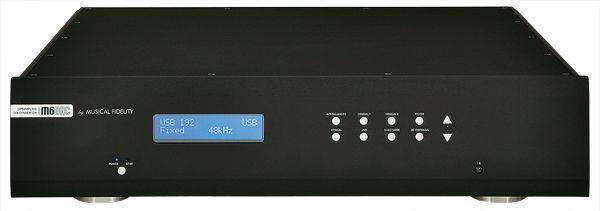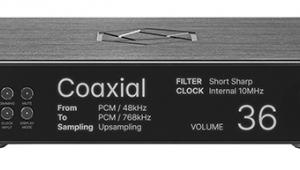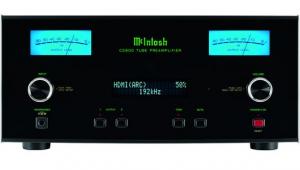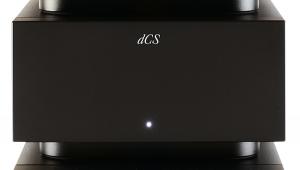Musical Fidelity M6 (£2000)

And to complete the M6 DAC’s capabilities, Musical Fidelity has also included Bluetooth, which means that you can play music files wirelessly from any recent Bluetooth-enabled phone or other device, without involving your main home computer wireless network.
Current Bluetooth devices use the APTX codec instead of the earlier SBC lossy compression, and this has perhaps encouraged hi-fi manufacturers to take it more seriously. Antony Michaelson became enthused about Bluetooth through using the Soundmatters FoxL portable products, so much so that MF became its UK distributor.
The M6 comes complete with a remote handset, with 14 buttons dedicated to the M6 DAC, duplicating the neat array of controls on the M6’s solid alloy fascia. Here, six buttons provide input selection; two more are De-Emph, which enables or disables automatic de-emphasis of source material that requires it, and Filter, which gives a choice of two digital filter characteristics. The two arrow-shaped buttons can be used to trim the signal level up or down for each source to match their output levels.
At the back, you will find an impressive plethora of socketry [see caption]. Setting up and using the M6 is truly painless for both USB and Bluetooth. All you need to do is to ‘pair’ your transmitting device with the M6 DAC as the receiver, entering the M6’s password if asked. The M6 automatically uses APTX if the transmitting device is using it, as indeed all Apple products have done since the launch of OS X 10.6.
Seamless listening
We started with Gwyneth Herbert’s Clangers And Mash [Naim Label] and her perky ‘Perfect Fit (Original Version)’. Using a Rega Apollo player as a transport, it didn’t take long to conclude that in this mode the M6 was indeed a very fine-sounding DAC. It was neutral and transparent, giving a sound that was always satisfyingly detailed and impeccably smooth. Playing the same music from an uncompressed AIFF file via the USB input, the M6 displayed most of the same virtues, giving a seamlessly listenable performance. Via the Bluetooth wireless link, we must admit that the music came over nearly as well, with not much identifiable loss. It often seemed smoother and less stressed than the more ‘accurate’ USB.
Nevertheless, with the jazz classic Art Pepper Meets The Rhythm Section [Contemporary] the M6 via USB really managed to convey the gripping, cliff-hanging quality of the alto saxist’s solos, flashes of genius shining through.
Moving on to 24-bit/192kHz material, we weren’t disappointed. On an excerpt from a Tony Faulkner master recording of Rachmaninov’s Symphonic Dances, the M6 clearly revealed the hi-res benefits. There was a fabulous sense of space around the instruments, a feeling of truly effortless dynamics, and a transparency that gave truth to instrumental timbres, like the beautifully layered string sound or tingling realism of the brass.
Finally, we listened to Radio 3 via the BBC Radio Player, with a lunchtime concert presented in the BBC’s so-called ‘High Definition sound’. Entering the house on the ADSL phone line, the internet stream was being transmitted from a wireless router to a MacBook. From there, the AAC digital audio was sent wirelessly via Bluetooth and its codec to the Musical Fidelity M6, which decoded the digits and fed the analogue signal faultlessly to the amplifier and speakers.
As the sombre yet gorgeous tones of Puccini’s Chrysanthemums filled the room, we reflected that this was a strange and rather complicated procedure just to receive a radio broadcast. But it was still a great way to enjoy the music!
Verdict
With excellent performance at a less than high-end price, the M6 DAC is great for hi-res, while for less critical listening the convenience of Bluetooth will be appreciated by anyone who carries music around in a portable device.
Originally published in the 2013 Yearbook

























































